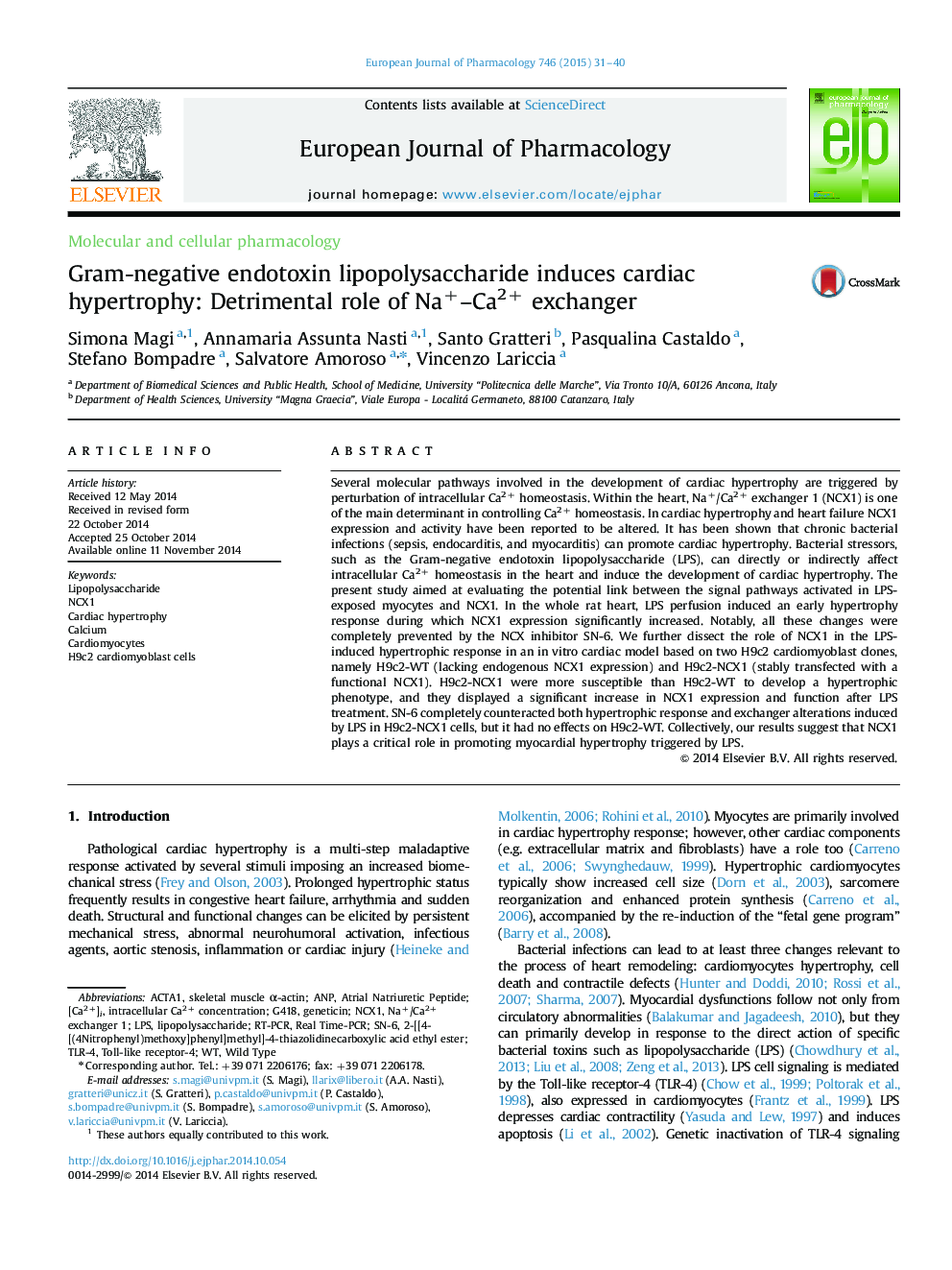| Article ID | Journal | Published Year | Pages | File Type |
|---|---|---|---|---|
| 2531548 | European Journal of Pharmacology | 2015 | 10 Pages |
Several molecular pathways involved in the development of cardiac hypertrophy are triggered by perturbation of intracellular Ca2+ homeostasis. Within the heart, Na+/Ca2+ exchanger 1 (NCX1) is one of the main determinant in controlling Ca2+ homeostasis. In cardiac hypertrophy and heart failure NCX1 expression and activity have been reported to be altered. It has been shown that chronic bacterial infections (sepsis, endocarditis, and myocarditis) can promote cardiac hypertrophy. Bacterial stressors, such as the Gram-negative endotoxin lipopolysaccharide (LPS), can directly or indirectly affect intracellular Ca2+ homeostasis in the heart and induce the development of cardiac hypertrophy. The present study aimed at evaluating the potential link between the signal pathways activated in LPS-exposed myocytes and NCX1. In the whole rat heart, LPS perfusion induced an early hypertrophy response during which NCX1 expression significantly increased. Notably, all these changes were completely prevented by the NCX inhibitor SN-6. We further dissect the role of NCX1 in the LPS-induced hypertrophic response in an in vitro cardiac model based on two H9c2 cardiomyoblast clones, namely H9c2-WT (lacking endogenous NCX1 expression) and H9c2-NCX1 (stably transfected with a functional NCX1). H9c2-NCX1 were more susceptible than H9c2-WT to develop a hypertrophic phenotype, and they displayed a significant increase in NCX1 expression and function after LPS treatment. SN-6 completely counteracted both hypertrophic response and exchanger alterations induced by LPS in H9c2-NCX1 cells, but it had no effects on H9c2-WT. Collectively, our results suggest that NCX1 plays a critical role in promoting myocardial hypertrophy triggered by LPS.
